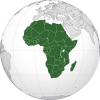
Coins of Asian countries
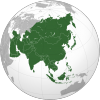
Coins of Asian countries. Coins of Asian countries formed before the first half of the 20th century are presented.
Coins of European countries
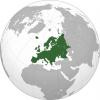
- Bulgarian principality. Third Bulgarian Kingdom (1878-1946)
- Wilhelmina is Queen of the Netherlands.
- 1929-1942 Vatican State Coin Collection
- Kingdom of Italy (1861-1947)
- Kingdom of Romania
- Crown of St. Istvan.
- Small coins of German states until 1871
- Small coins of Italian states until 1861
- Coins of Austria (1804-1938)
- Coins of Belgium from 1830 to 1944.
- Coins of Great Britain. Part I. XIX century.
- Coins of Great Britain. Part II. XX century.
- Grand Duchy of Luxembourg coins (1854-1939)
- Coins of Greece (1828-1930)
- Coins of Ireland
- Coins of Spain (1868-1945)
- Coins of the Principality of Liechtenstein
- Coins of the Crown Lands of Britain (Jersey and Guernsey)
- Coins of the Polish Republic (1918-1939)
- Coins of Portugal 1861-1945
- Coins of the Baltic Republics (1918-1940)
- Coins of Serbia 1868-1938
- Coins of the Third French Republic
- Coins of Finland
- Coins of Czechoslovakia
- Coins of the Swiss Confederation
- 1871-1933 German negotiable coins
- Scandinavian Coin Union
North American country coins
South American coins
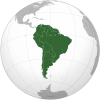
Colony coins
This section contains reviews of coins issued for circulation in the colonial territories of European states.
- Belgian Congo
- Second French colonial Empire (1814-1962)
- Overseas possessions of Denmark
- Colonies of the German Empire
- Coins of the British Colonies in Africa
- Coins of British Cyprus
- Coins of British Ceylon
- Coins of British India (1835-1948)
- Straits Settlements, Sarawak and North Borneo coins
- Coins of the Philippines
- Coins of the colonies of Great Britain in Australia and Oceania.
- Coins of the Portuguese colonies
Coins of the war years
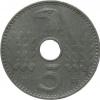
Overview of coins issued during the First and Second World War. The purpose of these reviews is to show how coins of regular issues have changed in the countries participating in the hostilities (and not only) due to the need to attract metals such as nickel, brass, bronze, etc., for the needs of the military industry.
Emergency money (notgeld)

Emergency money (notgeld) was issued at the beginning of the 20th century in some European countries whose economies were affected by World War I. These are Germany, France, Belgium, Spain , etc. The need to put notgeld into circulation was due to the financial crisis in wartime and the first post-war years, rapidly developing inflation, and a shortage of small bargaining chips. Since the release of notgeld was not engaged in the central bank of the state, but local municipalities and even cooperatives, they are not considered public money and they are highlighted in a separate category. In this section we will only talk about metal notgelds.
Exonumia
Exonumia is the collecting of objects that are similar to coins, but are not. These include tokens, payment tokens, commemorative and souvenir medals. The term "exonumia" was coined by the American numismatist Russell Rulau in 1960.
